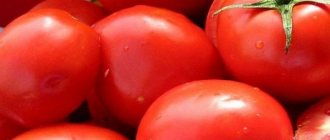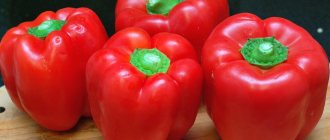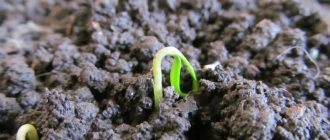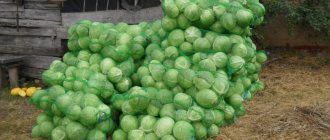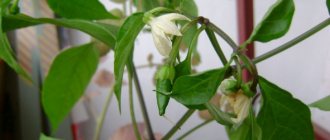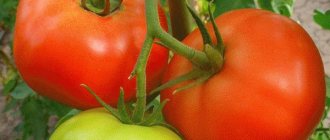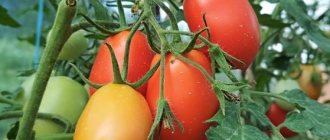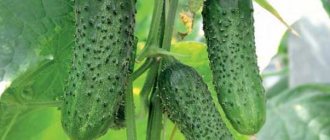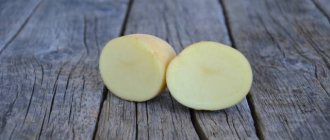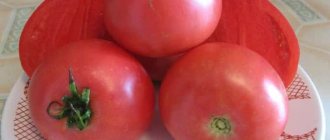Sweet pepper Claudio is a hybrid of Dutch selection. This is one of the most popular varieties among gardeners, included in the State Register of the Russian Federation in 2007. Recommended for cultivation in regions with hot and long summers. However, due to its early ripening and resistance to temperature extremes, it can also be grown in areas with cool and changeable weather in a greenhouse.
What kind of pepper is this
Claudio f1 is a highly productive hybrid of sweet pepper. When growing it, you can always count on a rich, healthy harvest, since it is able to form ovaries even under unfavorable conditions.
Characteristics and description
The species belongs to early ripening crops (no more than 115 days). The bushes are powerful, spreading, with large dark green wrinkled leaves. Height is about 70 cm. Each grows 10–12 fruits weighing up to 200 g with a wall thickness of 8–10 mm.
The plant feels great both in a greenhouse and in open ground. Seed germination is almost 100%. Can be grown both in greenhouses and in open ground.
The fruits are prismatic, with four chambers. They have high taste value.
The photo shows Claudio pepper f1.
Hybrid f1
The f1 hybrid is the result of long-term work by breeders. To obtain new types of crops, intraspecific plant crossings are carried out. The result of this work is new hybrids that are superior to their parents in key indicators: yield, taste, ripening time and, most importantly, disease resistance and frost resistance.
The F1 symbol present in the name of the Claudio pepper indicates that it is a first generation hybrid obtained from direct crossing of parent varieties. The hybrid form is highly productive. The description of the plant was officially included in the State Register of Russia in 2007.
Claudio F1 sweet pepper plant (Bayer Nunhems) crop in the field
Distinctive features
Claudio f1 is known to all experienced gardeners. Recommended for cultivation in the southern regions of the country. Has the following positive characteristics:
- is characterized by increased resistance to high ambient temperatures;
- suitable for long-term transportation and can be stored for up to two months (if collected at the stage of technical maturity);
- seed germination is high (96–100%);
- good fertility of relatively small bushes;
- low rate of transition from the stage of technical maturity (green fruits) to the biological stage (bright red, characteristic of a ripe vegetable).
Fruit characteristics and yield
The hybrid produces glossy, drooping, prism-shaped fruits. Green at the stage of technical maturity and red at biological maturity. The weight of one pepper is 100–150 g. The walls are fleshy, juicy, 8–10 mm thick.
The yield, subject to all technological cultivation standards, is almost 300 c/ha.
Characteristic
Pepper variety Claudio f1 is an early ripening pepper: from the emergence of seedlings to the moment of harvesting the fruits, it takes from 75 to 80 days.
The productivity of this species is good. Peppers ripen almost simultaneously. During the first wave, from 7 to 10 fruits are set on the plant, later the ovary is less abundant (6-8 fruits).
Claudio - sweet pepper. Suitable for growing in open beds, but it can also be grown in film or glass greenhouses. The variety has good transportability and a long shelf life. Claudio f1 is heat-resistant, the fruits are very rarely baked even in strong sun.
Description of the bush
Description of the bush: plant of determinate type, semi-spreading. The bushes are quite powerful, of medium height, which ranges from 100 to 120 cm in warm climates. A garter is essential.
Claudio pepper has many leaves. They are large and have a rich dark green color. Wrinkles are very faintly visible.
Description of the fruit
Characteristics of the fruits: the fruits are large, their weight can reach from 100 to 180 g (on average), but often reaches 200 - 250 g. They have an elongated cuboid shape divided into 4 chambers.
Claudio peppers have a durable, glossy surface. Upon the onset of technical ripeness, the fruits have a bright green color, which later (during full ripening) will change to rich red, even burgundy.
The wall thickness varies and, depending on growing conditions, ranges from 6 to 13-14 mm. The pulp is very juicy, fleshy and tasty, there is no bitterness. Pleasant, slightly spicy aroma. Due to this, they are most often consumed raw, but they are also good for making salads, stewing, canning and stuffing.
Preparation for cultivation
Claudio pepper, like any nightshade, is grown from seedlings. Before planting, the seeds must be sorted and damaged ones removed. A mandatory procedure is to soak them in warm water until they swell. After this, they are transferred to a damp cloth or gauze, covered with a second layer and waited for 3-4 days.
After this, the planting material is treated with a biostimulant such as Epin, Zircon or Kornevin.
Attention! If the seeds are covered with a yellow shell, it means that the manufacturer has disinfected them in advance. It is not advisable to do this again.
Seeds are planted in boxes or cups with loose fertile soil. You can buy it in a store or make it yourself by mixing garden soil, sand and humus in equal proportions. Adding a small amount of wood ash has a good effect. The mixture is heated in the oven, allowed to cool and then distributed into cups or boxes. Depending on the region, pepper seedlings are planted from February to March.
Growing seedlings
The seeds are planted in prepared soil to a depth of about 2 cm. It is best to do this in separate pots, otherwise picking will be required, during which the young roots of the plant can be damaged and the harvest can be lost. After planting, the soil is watered and covered with film. For future seedlings, you need to choose a warm place.
After the first shoots appear, the film is removed. At this stage, the most important factor affecting the quality of future plants is temperature. Even at night it should not fall below 12°C. You can spray and water young peppers only with warm, settled water. The room in which the seedlings are located should be well ventilated and illuminated 10–12 hours a day.
Important ! Many gardeners believe that growing seedlings in peat pots has a bad effect on the quality and strength of the adult plant.
If the plant was planted in a separate container, then after the first buds begin to form, it is immediately planted in open ground or a greenhouse.
If the seedlings were planted in a box, then picking is important.
This is an important event that allows you to:
- prevent the roots of different plants from intertwining;
- discard diseased and weak shoots at this stage, obtaining stronger bushes;
- ultimately reap more good harvests.
Picking should be done carefully and slowly. It is carried out at the stage of 2-3 true leaves, until the root system of the plant has formed. When transplanting into a new container, take into account the depth of the sprout in the previous container. You can’t dig the pepper down to the cotyledon leaves.
Immediately after transplantation, the plant will be under stress. It is better to remove it from direct sunlight for several days and ensure the ambient temperature is 20–22 °C. After 14 days, you can fertilize with ready-made fertilizer.
Important! Do not over-moisten the soil, otherwise root rot and plant death may occur.
Planting pepper
Peppers are planted in open ground at the end of May, when the air temperature does not drop below 15°C even at night. It is important to observe crop rotation. The best predecessors of pepper are pumpkin and zucchini. It is not advisable to plant after potatoes and eggplants. The plant prefers soil with low acidity, light and loose.
Claudio peppers are planted in small holes (without deepening the root collar) at a distance of 40 cm from each other. It is advisable to pour 1 tbsp into each hole. l. fertilizers high in nitrogen or phosphorus. At the end of planting, the plants are watered abundantly.
Further care
The Claudio hybrid is unpretentious, but to obtain a good harvest, some agrotechnical manipulations are required:
- removing lower leaves and providing good support;
- if the bush has formed from several stems, only the strongest ones are left (it’s best to pinch them with your hands);
- The flower grown on the first branch is removed, thereby increasing the yield.
- timely and abundant watering;
- loosening the soil under the bushes;
- The ideal temperature is 22–25°C.
- Until flowering, just one watering per week is enough; after the first flowers appear, watering is increased up to two times.
Outdoor care
Growing peppers is not particularly difficult, but it requires careful and careful care of the plant.
Mulching
Claudio pepper is a moisture-loving crop, but cannot tolerate stagnation of water in the soil. To reduce moisture loss and ensure maximum soil aeration, it is necessary to regularly loosen the soil, weed the beds, removing all weeds.
Mulching will help create conditions for good growth and healthy development of the plant - placing special organic (natural components with nutrients) and inorganic (protect the hybrid from overheating, weeds and pests) compositions on the surface of the earth.
Carrying out such activities will greatly facilitate crop care and save the time and physical effort required for this.
It is recommended to use the following components as mulch:
- straw;
- black film;
- thin sawdust;
- wood waste;
- cut grass;
- compost, manure and humus;
- ordinary garden waste of natural origin.
The use for such purposes of transparent films made of polypropylene, polyethylene, and other artificial materials that do not allow sunlight to pass through, which contributes to root rotting, is prohibited.
The layer of mulch cannot be too thick, on average it should be up to 5–8 cm. The optimal time for carrying out such work is the last days of May - the beginning of June, when the snow has completely melted, the ground has warmed up well, the seedlings have strengthened and started growing.
Top dressing
Enriching the soil with nutrients helps strengthen the roots, stimulates photosynthesis, and increases the yield of the hybrid.
Plants should be fertilized 2–4 times a season, following the following recommendations:
- a few days before fertilizing, it is necessary to water the plants to ensure even distribution of the composition in the soil;
- It is advisable to alternate organic fertilizers such as manure solution, store-bought mineral mixtures or droppings;
- In the initial stage of formation of ovaries on the bushes, as well as during the period of completion of fruit ripening, it is recommended to spray the plants with sodium humate or sprinkle the beds with wood ash at the rate of 1 tbsp. per 1 m²;
- An excellent option for natural fertilizer is a solution of chicken manure (1:10), which should be applied 2 times a season, pouring the mixture under the root of the plant;
- organic compounds can be replaced with nitrophoska - approximately 30–40 g per 1 m².
Claudio pepper should be fed in the morning and evening, which will allow you to get fruits that match the description of the presented variety and colorful photos of the plant.
Watering
This crop is a drought-resistant plant, but timely watering of the bushes has the most positive effect on the quality of the harvest.
The seedlings should be irrigated with warm (+23… +25 °C) and settled water manually or using a drip irrigation system. Using cold moisture can slow down fruiting and delay fruit ripening for a long time. Water procedures should only be carried out after sunset.
At the first stage of cultivation, it is necessary to provide daily and fairly abundant moisture to the soil until the flowering phase of the crop begins. In the future, such activities should be carried out every 3–4 days, watering the bushes at the rate of 15 liters per 1 m².
When caring for a plant, you should always remember that a lack of moisture will have negative consequences for the peppers - the leaves will gradually droop, the ovaries will fall off, which means you can say goodbye to the harvest. A mandatory procedure that completes each regular watering is loosening the soil and removing weeds.
Bush formation
To grow a highly productive plant, it is necessary to correctly form the bushes, for which the following steps must be performed:
- after a fork appears on the plant, you need to remove the central flower located on the first branch, as well as all the buds and lower leaf plates;
- It is recommended to form the plant into 2–3 stems, leaving at least 2 powerful and maximally developed stepsons;
- all other shoots need to be removed (pinched) to help the plant redirect the supply of nutrients directly to the fruits and speed up the ripening of vegetables.
The proposed agrotechnical regime for the formation of a strong and healthy bush will have a positive impact on the quality and commercial characteristics of the harvested crop.
Harvest and storage
Claudio pepper (the description of the variety and photo of the crop contained on the label will help solve the problems of using the crop) will ripen approximately 80 days from the moment the seedlings are planted in open ground. By this time, the fruits will have already reached their maximum size and acquired a rich red color.
The harvesting time depends on its intended purpose:
- for long-term storage, vegetables must be removed from the bushes at the stage of technical maturity, when the fruits have grown to full size, but their color still remains within dark green shades;
- If you want to use the grown mass in the near future, vegetables should be collected in a biologically ripe state.
It is recommended to remove the fruits using pruning shears, carefully separating the peppers from the stem along with the stalk. For longer and better storage, it is recommended to wrap each fruit in paper.
A special feature of the hybrid is the fact that during the ripening process the vegetables do not turn red for a long time, and when they reach technical ripeness, they can become covered with red spots. To avoid such an undesirable effect, which worsens the presentation of the product, fruits should be collected in a green state or upon reaching absolute maturity.
Diseases and pests
The fight against such manifestations consists, first of all, in regular inspection of plants, carrying out preventive measures, and taking immediate health-improving actions when the slightest signs of disturbances in plant development appear.
The table shows the main problems that arise in the process of growing a hybrid:
| Name of disease/pest | Signs and symptoms of crop damage | Treatment options |
| Spider mite | This parasite prefers to settle on the lower part of leaf blades, so the vegetable grower may not immediately detect the first pest. When the population increases, yellow spots will appear on the leaves, a gray coating will form on the inside of the plates, and a barely noticeable cobweb will form on the vegetative organs. | To get rid of such a scourge, you need to prepare a solution from chopped onion (1 tbsp), soap (1 tbsp), dandelion leaves (1 tbsp) and 10 liters of warm water. The created mixture must be left to steep for 5 hours, then the beds should be treated with the resulting preparation. |
| Tobacco mosaic | This is one of the most dangerous infections, which appears on the surface of the plant leaves in the form of emerald-beige stains, gradual thinning, discoloration and deformation of the plates. The virus has great vitality, is able to penetrate healthy fruits through the juice of infected specimens, and remain in the soil for up to 5 years. As a result of the disease, vegetable yields are sharply reduced, the fruits are small and ugly. | The fight against the rod-shaped parasite of protozoan viruses consists, first of all, in preventive measures - disinfecting garden tools and pepper seeds, watering the bushes with a solution of milk and water (1:10) with the addition of 10 drops of iodine, or treating plants for 10 minutes with 2% caustic sodium Spraying the bushes with a solution containing any fungicide has a good effect. |
| Blackleg | This fungal infection occurs at the stage of formation of true shoots in the plant. The cause of the disease may be the use of contaminated seed material or soil. At the same time, the bushes begin to dry out, the lower part of the stems gradually darkens. | To cope with the disease, the beds must be watered generously with a solution of potassium permanganate. |
| Late blight | The leaves and fruits of bushes infected with mycelial organisms (lower fungi) become covered with dry spots with a brownish tint. The rapid spread of the disease is facilitated by increased air humidity indoors or outdoors. | It is recommended to treat the culture with Ftosporin-M or Gamair. |
| Gray rot | The causative agent of the disease is the so-called black rot, which is characterized by the appearance of wet spots on the leaves with a brown tint and a gray coating. | Severely affected bushes should be destroyed, the rest of the planting should be treated with drugs such as Previkur or Fundazol. |
| Naked slugs | These dangerous pests (gastropods) prefer to feast on both the fruits and juicy leaves of pepper, quickly destroying the plantings. | The parasites that have settled must be collected from the garden beds manually, and then the soil must be treated with Strela. |
Claudio pepper (the description of the variety and photo of the plant contains brief information about the characteristics of growing the hybrid), which is susceptible to some fungal infections (gray rot, late blight, brown spot), is recommended to be treated with both the means indicated in the table and other effective drugs - Borier and Oksikhom.
Time-tested copper sulfate works well against bacteria.
Typical diseases and pests
Diseases and pests are generally standard for the entire species.
In conditions of high humidity, fungal diseases develop. To combat, reduce watering and spray the bushes with Barrier and Oksikhom. Repeated treatment is necessary after 20–25 days.
Reference . Hybrid Claudio f1 is not susceptible to such a dangerous disease as tobacco mosaic.
Often the plant is attacked by the main garden pests: aphids, wireworms and spider mites.
An infusion of onion peels helps against spider mites.
A solution of wood ash works well against aphids.
For wireworms, they set traps from sweet root vegetables, which they like more than pepper.
Use of fruits
Claudio fruits can be used everywhere. Its delicate pulp allows the fruit to be eaten in a variety of forms:
- as an ingredient for fresh salads;
- in pickled form;
- as a basis for stuffing;
- in salted form.
Claudio fruits tolerate freezing well and can be dried and preserved. The pulp contains a large number of components that are beneficial for both children and adults.
It is customary to harvest the fruits of the bell pepper Claudio in the green state. This can be explained by the fact that peppers ripen well at room temperature, and this harvesting procedure makes it possible to preserve the presentation of a larger number of fruits. There is nothing wrong with this, since green peppers already have good juiciness and meatiness.
Interestingly, bell peppers hold the record for vitamin C content. The amount of ascorbic acid in peppers even exceeds the amount found in citrus fruits.
Advantages and disadvantages
Claudio pepper is valuable for its fruits. Large, thick-walled, thin-skinned peppers have a bright aroma and excellent taste. An early ripening crop with a growing season of 80 days. Shows high productivity. Resistant to diseases and pests.
The hybrid easily tolerates temperature changes. Not afraid of sunburn and frost. Hard fruits are suitable for long-term transportation.
It can be grown both in greenhouses and in open ground.
It would seem that this is an ideal pepper hybrid, however, it also has disadvantages. You can get a good harvest only by devoting enough time to growing the crop. The bush requires feeding, loosening, watering and garter. The level of lighting is important. Only with proper care can you reap a decent harvest.
The fruits have good shelf life only if collected during the period of technical ripeness. Peppers collected at the moment of biological maturity cannot be stored for long.
Characteristics of the variety
In most of Russia, summer residents sow the crop as seedlings (find out when to plant peppers according to the lunar calendar in 2019), and only then plant them in ridges or under shelters. For this hybrid, the ripening time is about 80 days (the period from the moment of seedling germination to the stage of technical ripeness).
The variety will delight you with abundant fruiting, and two waves of fruit formation are distinguished:
- firstly, up to a dozen peppers are tied on each bush;
- in the second – 5-7 pieces.
The bushes are erect, powerful, with medium foliage. The hybrid belongs to the determinate species, the lateral branches are strong and strong. Plants are tied to supports (stakes are placed, trellises are installed),
It reaches a height of about a meter, when cultivated in the southern regions - up to 120-130 cm. The leaves are large, rich green in color, without wrinkles.
Elongated cube-shaped fruits are formed together, each weighing on average 120-180 grams. If desired and the hands are formed correctly, peppers of 200-230 grams are obtained.
At first, Claudio's fruits are dark green, and as they ripen they turn red and then burgundy. The skin is glossy, dense but thin. Find out why peppers don't turn red.
The peppers are divided into four clearly visible chambers. The pericarp is juicy, thick, from 6 to 14 mm. The exact dimensions are determined by growing conditions.
The pulp is juicy, has a pleasant slightly sweet taste with a spicy aroma. Basically, Claudio goes to the summer menu for salads, as it is very tasty fresh. It is used for cooking stuffed dishes, stewing, and canning.
On a note!
When harvesting fruits in a state of technical ripeness (green), the shelf life is up to two months. A mature red hybrid does not store well; it is better to eat it immediately or process it.
Green peppers tolerate transportation well.
Reviews
Gardeners who have tried to grow the Claudio hybrid are generally satisfied with the resulting harvest.
Irina, Ryazan: “I bought Claudio pepper seeds in a specialized store on the advice of a neighbor. I wasn't disappointed. The fruits began to ripen quickly, fleshy, bright red in color. I prepared it for the winter and used it in salads all summer.”
Tamara, Ivanteevka: “ Claudio pepper has been ripening on my plot for several years now. I plant only in a greenhouse, so the harvest ripens two weeks earlier than in open ground. Of course, the hybrid requires attention: watering, fertilizing, treating so that the bushes do not get sick. But the result does not disappoint. Large, fleshy peppers delight the eye and heart.”
Vladimir, Kostroma: “I’ve been trying to grow Claudio pepper on my plot for the second season. In general, I like the hybrid: tasty fruits, fleshy, bright red. But they ripen longer than stated in the manufacturer’s description.”
